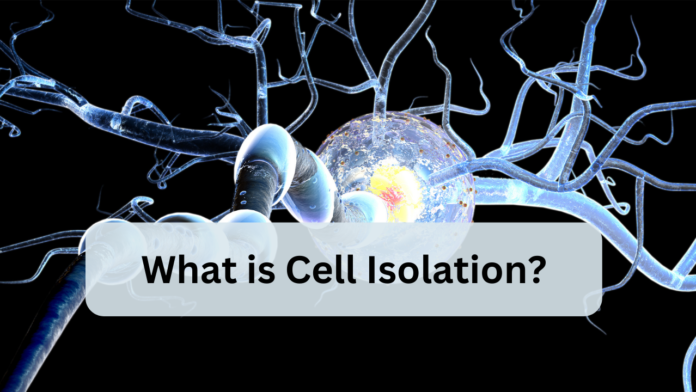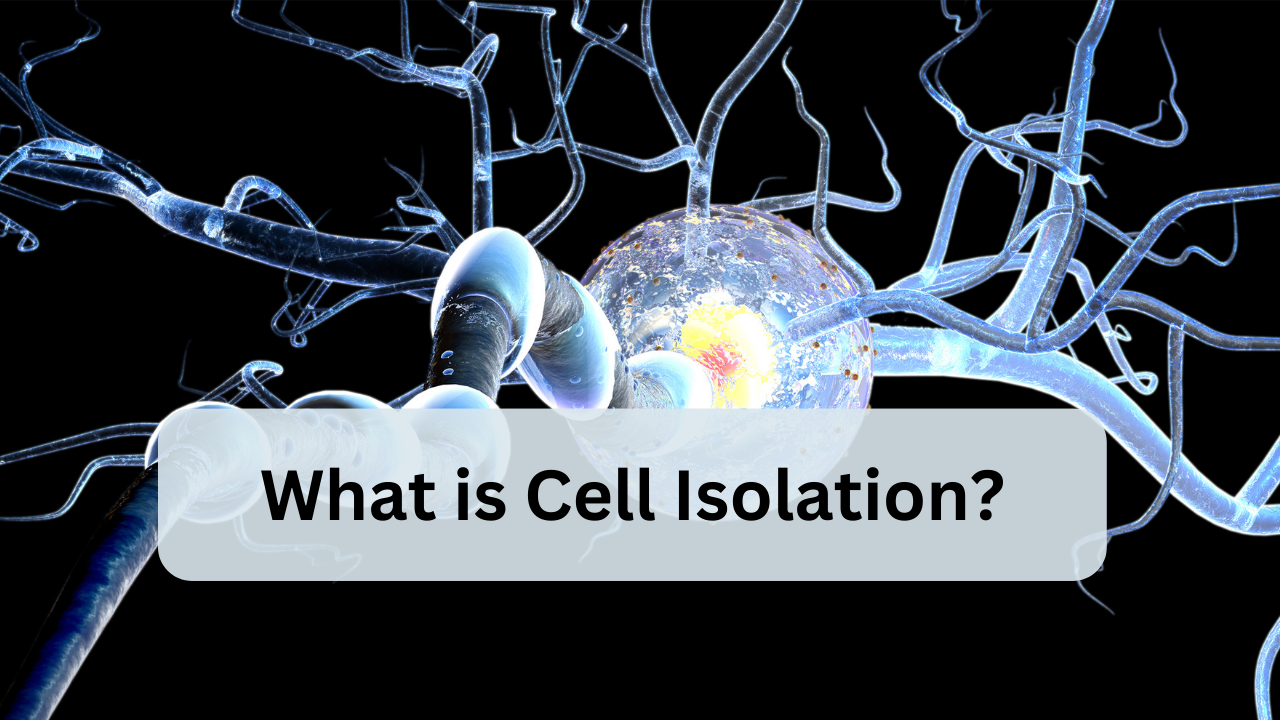In the vast landscape of biological research, the isolation of specific cells has emerged as a cornerstone technique, offering scientists a magnifying glass into the intricate world of cellular functions and behaviors. The process of cell isolation involves the meticulous separation of individual cell types from complex biological samples, such as tissues or blood. This critical step paves the way for detailed investigations, enabling a deeper understanding of diseases, therapeutic developments, and the fundamental mechanisms governing life at the cellular level.
Contents
Defining Cell Isolation:
At its core, cell isolation is the selective extraction of a particular type of cell from a heterogeneous mixture, allowing researchers to focus their studies on isolated populations. This precision is crucial for deciphering the nuanced contributions of individual cell types to various physiological processes and pathological conditions.
The Significance of Cell Isolation:
The significance of cell isolation resonates across diverse scientific disciplines. By dissecting complex biological samples into specific cell populations, researchers gain unprecedented insights into cellular functions, interactions, and responses. This level of granularity is particularly pivotal in the realms of cancer research, stem cell studies, immunology, and the development of cell-based therapies.
Methods of Cell Isolation:
1. Physical Methods:
Physical methods leverage mechanical forces to separate cells based on size, density, or other physical characteristics. These techniques include:
- Filtration: Utilizing porous membranes to separate cells based on size.
- Centrifugation: Employing centrifugal forces to separate cells based on density.
- Density Gradient Separation: Creating density gradients to differentially sediment cells.
Physical methods are often employed when preserving cell viability is a priority, as they minimize the use of enzymes and antibodies that could potentially affect cell function.
2. Enzymatic Methods:
Enzymatic methods involve the use of enzymes to break down the extracellular matrix, releasing individual cells. Common enzymatic methods include:
- Tissue Dissociation: Breaking down tissues into individual cells using enzymatic digestion.
- Enzymatic Digestion: Employing enzymes to release cells from tissues or cell aggregates.
Enzymatic methods are particularly useful when dealing with tissues with a robust extracellular matrix, facilitating the liberation of cells for downstream analyses.
3. Immunological Methods:
Immunological methods exploit the specificity of antibodies to target and isolate cells expressing specific surface markers. Notable immunological methods include:
- Fluorescence-Activated Cell Sorting: FACS Using fluorescence-labeled antibodies to sort cells based on specific markers.
- Magnetic-Activated Cell Sorting (MACS): Employing magnetic beads conjugated with antibodies to isolate cells via magnetic fields.
Immunological methods provide unparalleled selectivity, allowing researchers to isolate cells with precision based on the expression of specific proteins.
Principles Governing Cell Isolation:
The success of cell isolation hinges on maintaining a delicate balance between several key principles:
1. Cell Viability:
Preserving cell viability is paramount to ensure that isolated cells retain their physiological functions. Techniques that minimize mechanical stress and enzymatic exposure contribute to higher cell viability.
2. Purity:
Achieving high purity involves isolating the target cell population while minimizing contamination from other cell types. This is particularly critical when studying rare cell populations or when downstream applications require a specific cell type.
3. Functionality:
Isolated cells should maintain their functional characteristics, allowing researchers to conduct meaningful experiments and analyses. Ensuring that the isolation process does not compromise cellular functions is essential for obtaining reliable results.
The Cell Isolation Process:
The cell isolation process is a systematic series of steps, each crucial for the overall success of the procedure. A well-defined cell isolation protocol typically includes:
1. Sample Preparation:
This step involves collecting and preparing the biological sample for cell isolation. Tissues are often minced or disaggregated to facilitate subsequent steps.
2. Cell Release or Dissociation:
Enzymatic or mechanical methods are employed to release individual cells from the tissue or complex biological sample.
3. Separation:
The chosen cell isolation method is applied to separate the target cell population from the mixture. This may involve physical, enzymatic, or immunological techniques, depending on the specific requirements of the experiment.
4. Validation of Isolated Cells:
Isolated cells are validated to ensure the success of the procedure. This may involve assessing cell viability, purity, and functionality through various assays and analyses.
Adhering to a well-structured cell isolation process is fundamental to obtaining reliable and reproducible results.
Applications of Cell Isolation:
Cell isolation finds diverse applications across various scientific and medical domains, exemplifying its versatility and relevance. Some noteworthy applications include:
1. Cancer Research:
Isolating specific cancer cells enables researchers to delve into tumor heterogeneity, unraveling the complexities of cancer progression and paving the way for the development of targeted therapies.
2. Stem Cell Research:
Isolating stem cells is instrumental in advancing regenerative medicine, understanding developmental processes, and exploring the potential of stem cell-based therapies.
3. Immunology:
Isolating immune cells allows for the investigation of immune responses, autoimmune diseases, and the development of innovative immunotherapies.
4. Cell Therapy:
The isolation of therapeutic cells is a critical step in developing cell-based therapies for various conditions, including neurodegenerative disorders, cardiovascular diseases, and autoimmune conditions.
Future Perspectives:
As technology continues to evolve, the field of cell isolation is poised for further advancements. Emerging technologies, such as microfluidics and single-cell isolation techniques, promise to enhance the precision and efficiency of cell isolation, opening new avenues for exploration in cellular biology and medicine.
Conclusion:
In conclusion, cell isolation stands as a fundamental and dynamic process in the landscape of biological research. Its far-reaching implications span from unraveling the mysteries of cancer and regenerative medicine to deciphering the intricacies of immune responses.
By adhering to the principles of maintaining cell viability, purity, and functionality, researchers ensure the reliability of their findings. As cell isolation market continue to evolve and find novel applications, they will undoubtedly play a pivotal role in shaping the future of medicine and biology, offering unprecedented insights into the building blocks of life.




